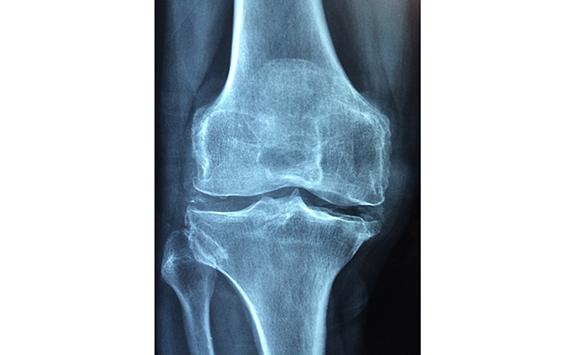Newcastle Biobank Project 5
Understanding inflammation and fibrosis in patients following knee replacement.
Joint replacement surgery results in pain relief for over 80% of patients. But for as many as 20% of patients, pain, swelling, and loss of movement are still an issue. This pain and swelling is caused by inflammation of the joint.
Inflammation is part of the body's response to damage. It is a protective response involving immune cells, blood vessels, and other molecules. Inflammation happens to get rid of the initial cause of injury, clear out damaged tissues and cells and start to repair the injury. For some people, this process of repair fails after surgery. The tissue becomes thick and scarred and the levels of some inflammatory molecules increase. Scar tissue forms in bands connecting parts of the joint that are not normally connected, causing loss of function and movement in the joint.
The cell type responsible for the development of the scar tissue is the ‘fibroblast’. Healthy healing of a wound happens when these fibroblasts are removed. Scar tissue is associated with large numbers of these fibroblast cells. Treatment of this scarring is limited by our current poor understanding of the underlying reasons behind why it happens. Symptoms are often severe enough to lead to revision surgery within 5 years of the first operation.

What we did
The aim of our study was to find out what happens during inflammation knees where repair has failed. We compared inflammation in scarred and non-scarred tissue, so we could improve our understanding of how the scarring occurs. What we have found could lead to new treatments to limit or reverse disease.
We collected fatty soft tissue from under the patients kneecaps that are removed as part of the surgery. It acts as a protective cushion, separating the kneecaps from shin and thigh bones. We broke down this fatty tissue into individual cells, then grew and multiplied these and used them to measure the levels of inflammatory molecules. By collecting tissue both from patients undergoing knee replacements for the first time, and those having a revision of their original surgery, we were able to compare inflammation between the two.
What did we find
The key findings of our study were:
- Scarred joints had a particularly high level of inflammation, and one of the molecules was up to 80 times higher than normal.
- The levels of one type of molecule in particular closely matched the level of pain felt by the patient.
- Fibroblasts are important in joint inflammation. They sense damage which causes more inflammatory molecules to be released.
- It is very important to use actual human tissues from inflamed joints to study scar tissue, inflammation, and pain properly. The main strength of our study is that we used directly relevant human tissues and were able to see a link between levels of these inflammatory molecules and pain.
Other outcomes
The research done on the joint tissues kindly donated by patients to the Biobank and used for our study, has led to 3 articles in scientific journals, 6 presentations at national conferences and has helped with the successful award of over £60,000 in funding to further investigate inflammation in painful knee replacements.